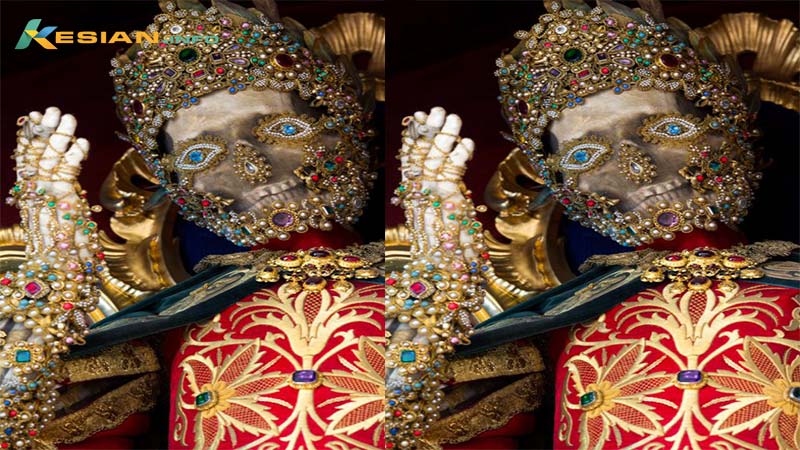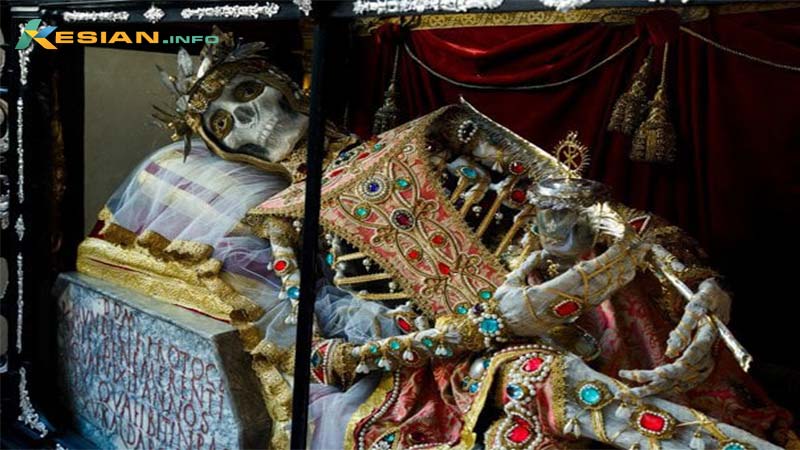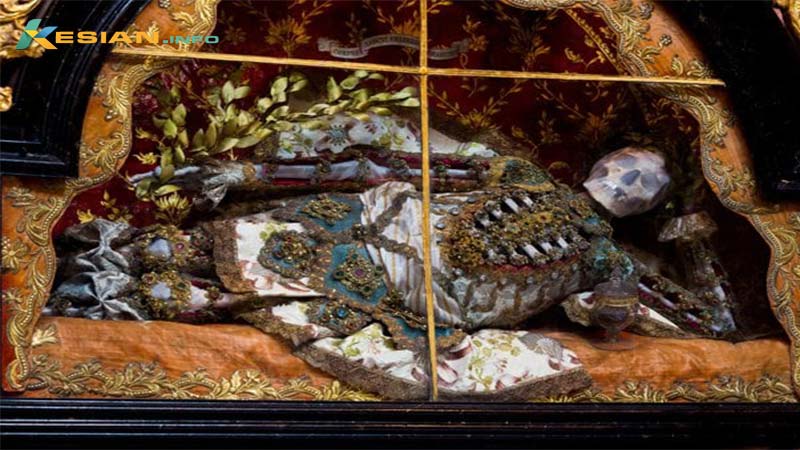Paul Koudounaris is not a man who shies away from the macabre. Though the Los Angeles-based art historian, author and photographer claims that his fascination with death is no greater than anyone else’s, he devotes his career to investigating and documenting phenomena such as church ossuaries, charnel houses and bone-adorned shrines.

Which is why, when a man in a German village approached him during a 2008 research trip and asked something along the lines of, “Are you interested in seeing a dilapidated old church in the forest with a skeleton standing there covered in jewels and holding a cup of blood in his left hand like he’s offering you a toast?” Koudounaris’ answer was, “Yes, of course.”
At the time, Koudounaris was working on a book called The Empire of death, traveling the world to photograph church ossuaries and the like. He’d landed in this particular village near the Czech border to document a crypt full of skulls, but his interest was piqued by the dubious yet enticing promise of a bejeweled skeleton lurking behind the trees.
“It sounded like something from the Brothers Grimm,” he recalls. “But I followed his directions—half thinking this guy was crazy or lying—and sure enough, I found this jeweled skeleton in the woods.”
The church—more of a small chapel, really—was in ruins, but still contained pews and altars, all dilapidated from years of neglect under East German Communist rule. He found the skeleton on a side aisle, peering out at him from behind some boards that had been nailed over its chamber.
As he pried off the panels to get a better look, the thing watched him with big, red glass eyes wedged into its gaping sockets. It was propped upright, decked out in robes befitting a king, and holding out a glass vial, which Koudounaris later learned would have been believed to contain the skeleton’s own blood.

He was struck by the silent figure’s dark beauty, but ultimately wrote it off as “some sort of one-off freakish thing, some local curiosity.”
For Koudounaris, however, it’s not enough to simply document them in a book. He wants to bring the treasures back into the world, and see those in disrepair restored. Some of the church members agreed with Koudounaris’ wish to restore the skeletons, not so much as devotional items but as pieces of local history.
The cost of undertaking such a project, however, seems prohibitive. One local parish priest told Koudounaris he had consulted with a restoration specialist, but that the specialist “gave a price so incredibly high that there was no way the church could afford it.”
Still, Koudounaris envisions a permanent museum installation or perhaps a traveling exhibit in which the bones could be judged on their artistic merits. “We live in an age where we’re more in tune with wanting to preserve the past and have a dialogue with the past,” he says. “I think some of them will eventually come out of hiding.”
Resurrecting the dead
On May 31, 1578, local vineyard workers discovered that a hollow along Rome’s Via Salaria, a road traversing the boot of Italy, led to a catacomb.

The subterranean chamber proved to be full of countless skeletal remains, presumably dating back to the first three centuries following Christianity’s emergence, when thousands were persecuted for practicing the still-outlawed religion. An estimated 500,000 to 750,000 souls—mostly Christians but including some pagans and Jews—found a final resting place in the sprawling Roman catacombs.








